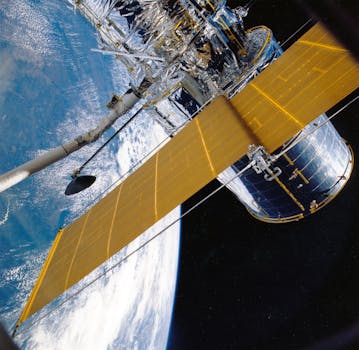LEO Satellites: Revolutionizing Global Connectivity with Low Earth Orbit Technology

LEO Satellites: Revolutionizing Global Connectivity with Low Earth Orbit Technology
LEO satellites, or Low Earth Orbit satellites, are a type of satellite that operates in a low Earth orbit, typically at an altitude of around 160 to 2,000 kilometers. This proximity to the Earth’s surface enables LEO satellites to provide low latency and high-speed connectivity, making them an attractive solution for various applications, including telecommunications, navigation, and Earth observation.
The use of LEO satellites is not new, but recent advancements in technology have made them more accessible and affordable. The cost of launching and operating LEO satellites has decreased significantly, allowing more companies and organizations to enter the market. This has led to a surge in the number of LEO satellites being launched, with many more planned for the future.
Benefits of LEO Satellites
LEO satellites offer several benefits over traditional geostationary satellites, including lower latency, higher bandwidth, and improved security. Because LEO satellites are closer to the Earth’s surface, they can provide faster data transfer rates and lower latency, making them ideal for real-time applications such as video conferencing and online gaming.
Another significant advantage of LEO satellites is their ability to provide global coverage, including in areas where traditional telecommunications infrastructure is limited or non-existent. This makes them an attractive solution for bridging the digital divide and providing connectivity to underserved communities.
Applications of LEO Satellites
LEO satellites have a wide range of applications, including telecommunications, navigation, Earth observation, and scientific research. In the telecommunications sector, LEO satellites are being used to provide broadband internet services, including to remote and underserved communities.
In the navigation sector, LEO satellites are being used to provide location-based services, including GPS and other navigation systems. Earth observation is another significant application of LEO satellites, with many satellites being used to monitor the environment, track weather patterns, and detect natural disasters.
Challenges and Limitations of LEO Satellites
Despite the many benefits of LEO satellites, there are also several challenges and limitations to their use. One of the main challenges is the high cost of launching and operating LEO satellites, although this cost is decreasing over time.
Another significant challenge is the risk of interference from other satellites and terrestrial systems. As the number of LEO satellites increases, so does the risk of interference, which can impact the performance and reliability of these systems.
Future of LEO Satellites
The future of LEO satellites looks promising, with many companies and organizations investing heavily in this technology. As the cost of launching and operating LEO satellites continues to decrease, we can expect to see even more innovative applications and uses for this technology.
In conclusion, LEO satellites are transforming the way we communicate and access data globally. With their low latency and high-speed connectivity, LEO satellites are poised to revolutionize various industries and bridge the digital divide. As this technology continues to evolve and improve, we can expect to see even more exciting developments and innovations in the years to come.



